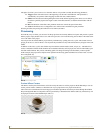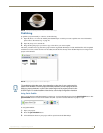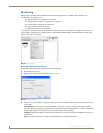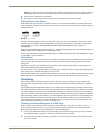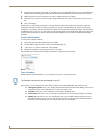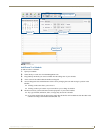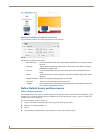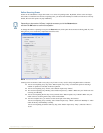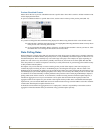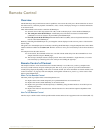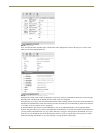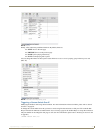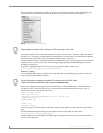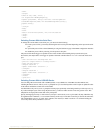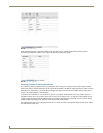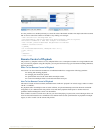
Inspired Signage XPress Programming
32
Inspired XPress - Programming Guide
Preview Scheduled Content
XPress allows the user to preview scheduled content at a specific date or time. This is useful to validate in advance what
will be displayed in the future.
To preview scheduled content at a specific date or time, use the control on the top of the preview panel (FIG. 42).
It is possible to change the time and the date being displayed in XPress using either the clock or the calendar control.
When the date is modified, the locked-clock icon is highlighted, indicating that the document currently shown
in the preview area is not using the local time.
If you open another document, XPress will open it as if the local date and time is the one you have set. Click
the locked-time icon to change the time back to the real local hour.
Data Polling Rates
When configuring a signage project that polls external server feeds, being aware of sample rates is extremely important.
Content providers can and will throttle, temporarily block, or even permanently block client requests if their servers are
flooded with requests. This is extremely easy to do with a large-scale project. For example, one player requesting an
update on a stock source every ten seconds is probably safe. However, since most servers don't update their data that
often, best practice is to send as few requests as necessary to satisfy client needs. A good starting point would be twenty
or thirty minutes between updates.
One request every ten seconds may not create a red flag for the provider if the requests come from one player, but
consider the project increasing in scale to one hundred players, all running the same project. This now leads to one
hundred players all requesting an update every ten seconds. Even if these were evenly dispersed, this still leads to ten to
one hundred players per second requesting an update. This is likely to be viewed by the content provider or local IT staff
as a denial of service attack and they would be justified to take protective action if satisfying IS-SPX Player requests is
putting undue strain on their resources. As an alternative, consider increasing the interval between update requests, or
introduce an aggregate server on your own network to serve up the data retrieved from the original provider. The
aggregate would be one request every ten seconds to the original content provider and it would handle the subsequent
requests from your own network. RSS feed sources will often include a max-age set in the XML to advise how often the
content cache should request an update from the server.
It should also be noted that if an aggregation server is employed, it is the user's responsibility to ensure that such an
aggregation of that data matches the style and format of any given data request precisely.
FIG. 42 Preview scheduled content



